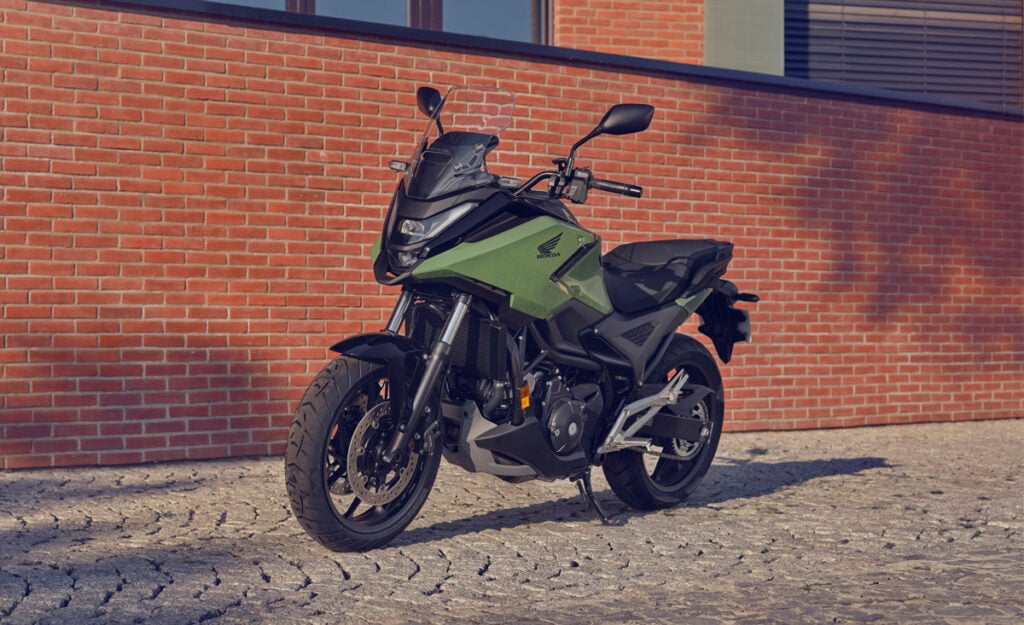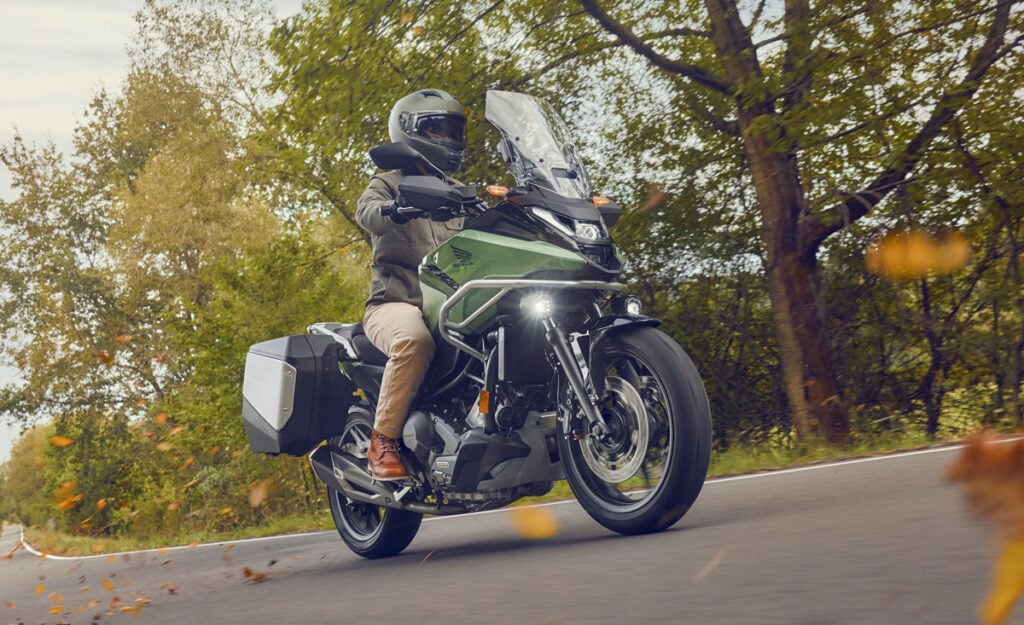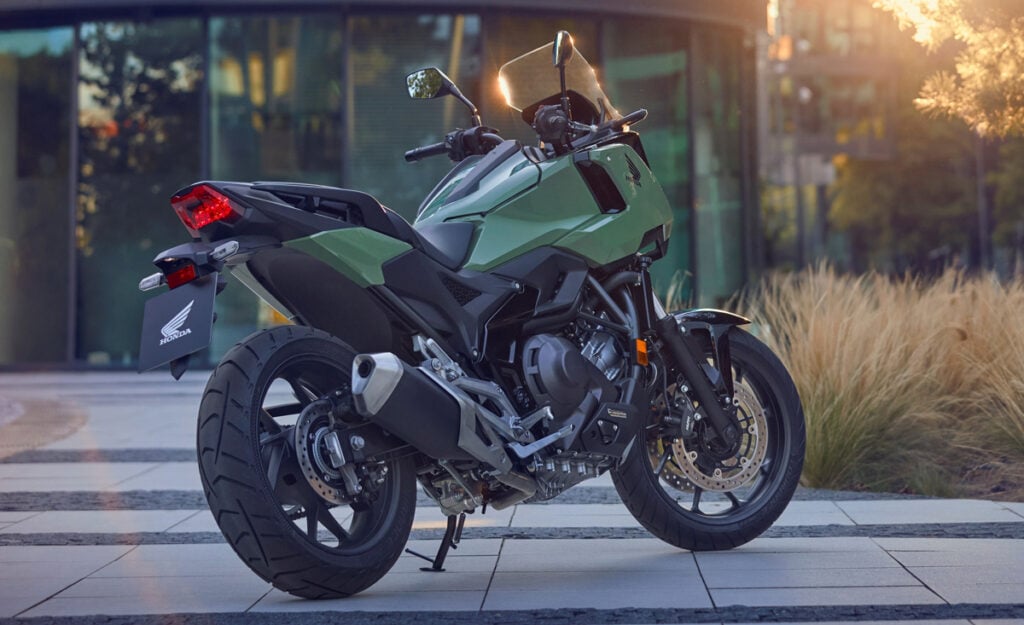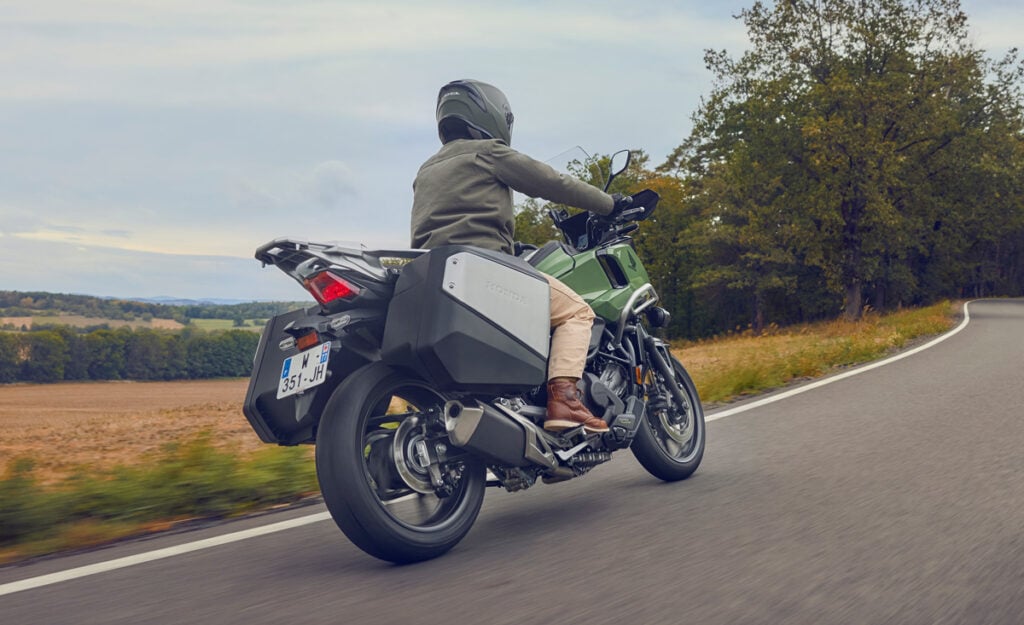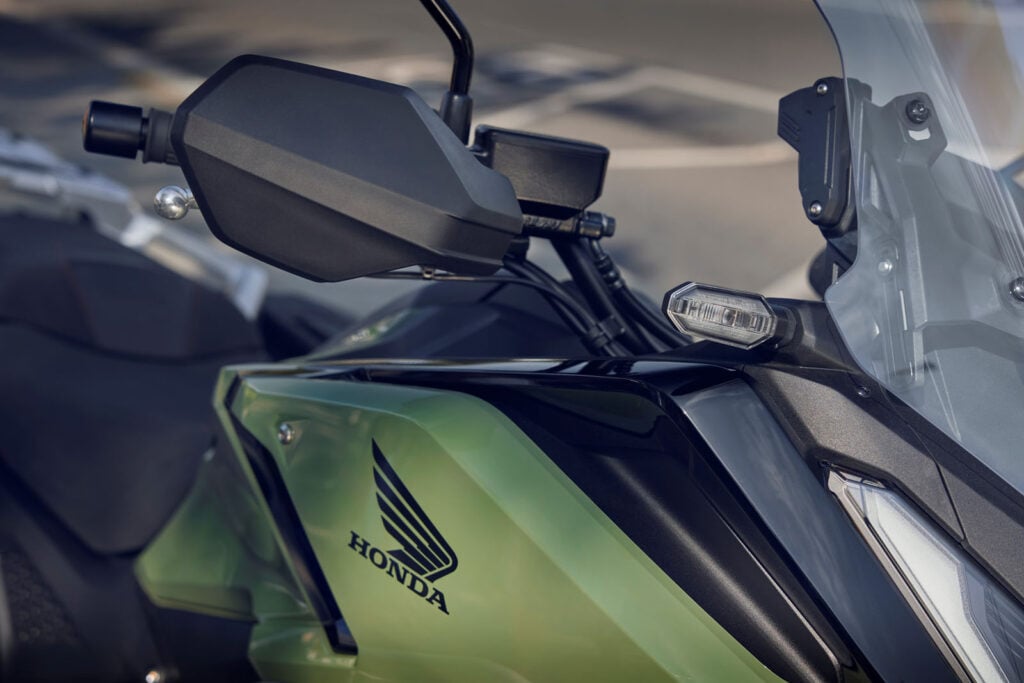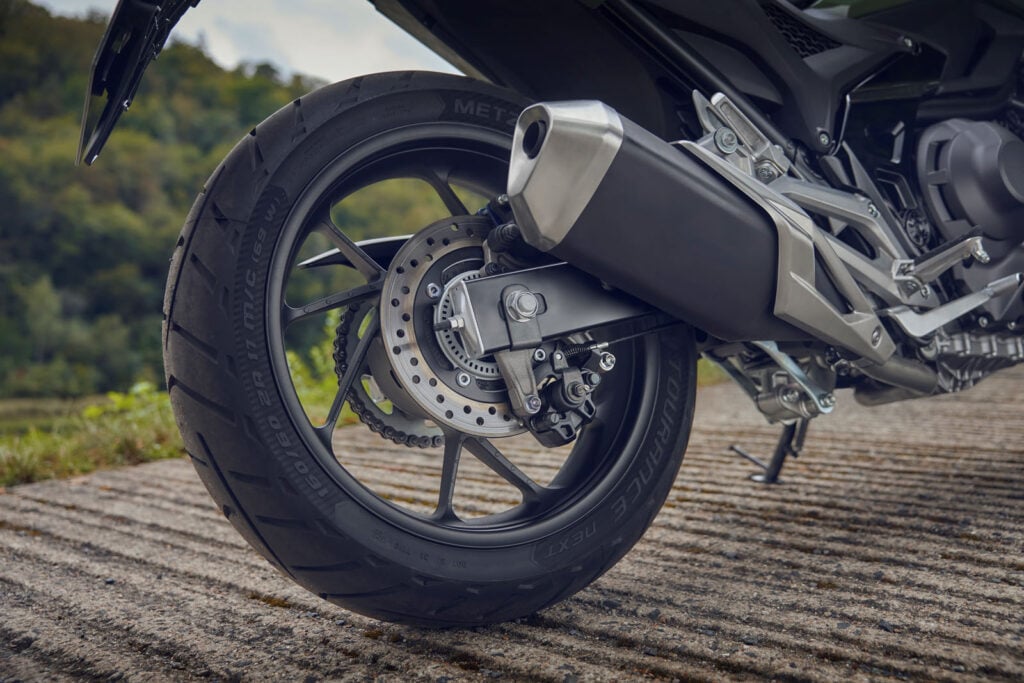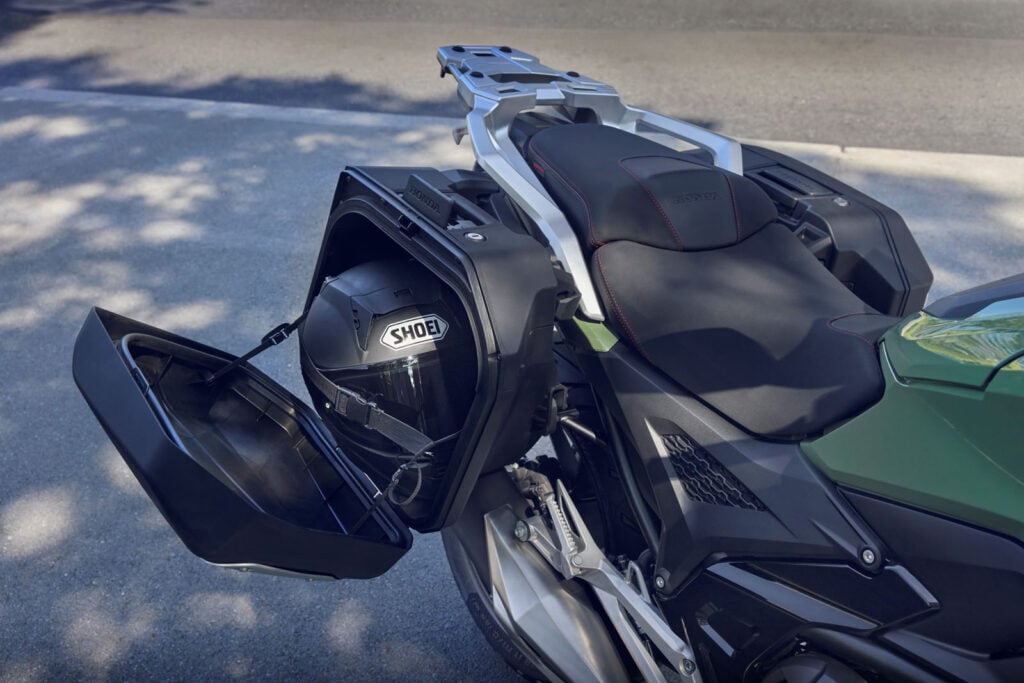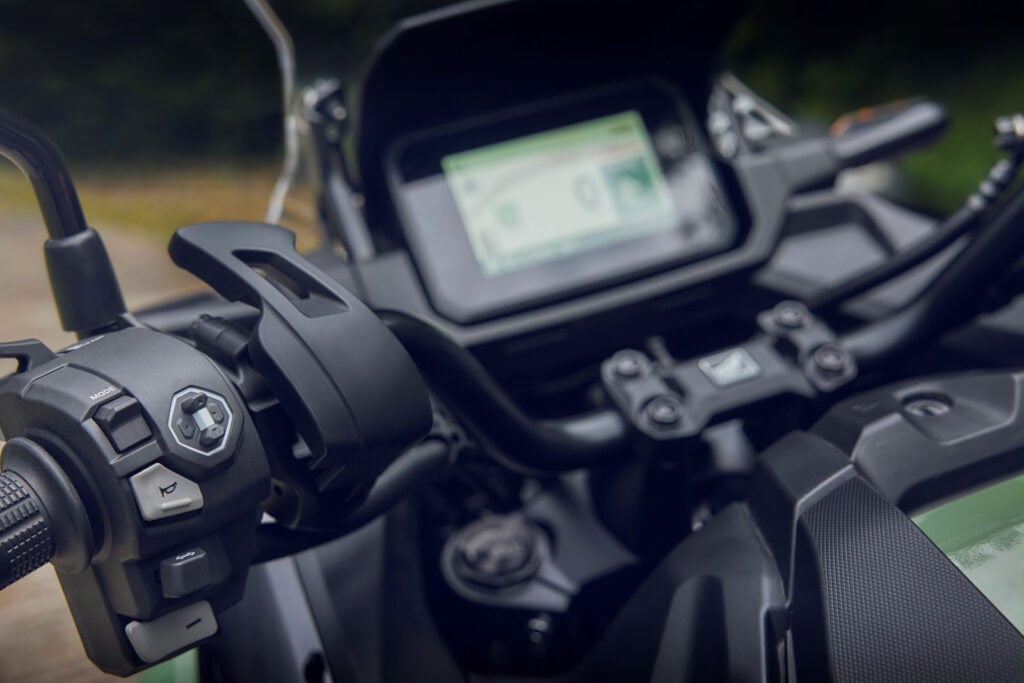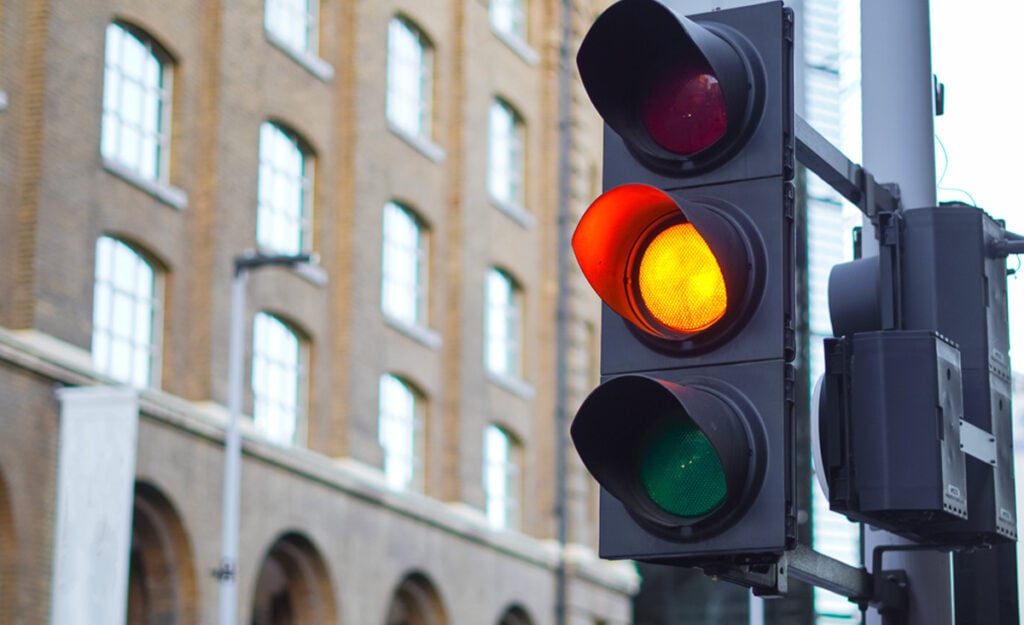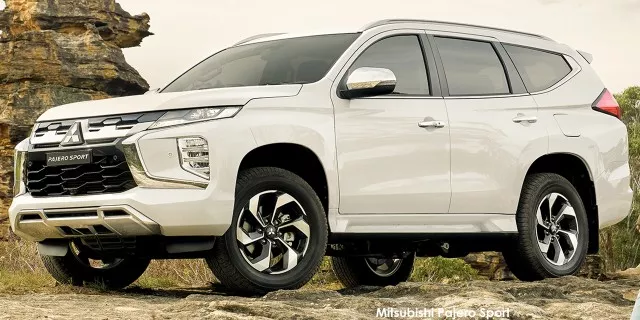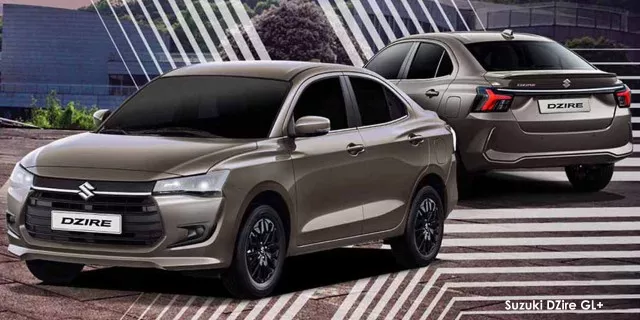What a R150,000 Honda two-wheeler looks like in South Africa in 2025
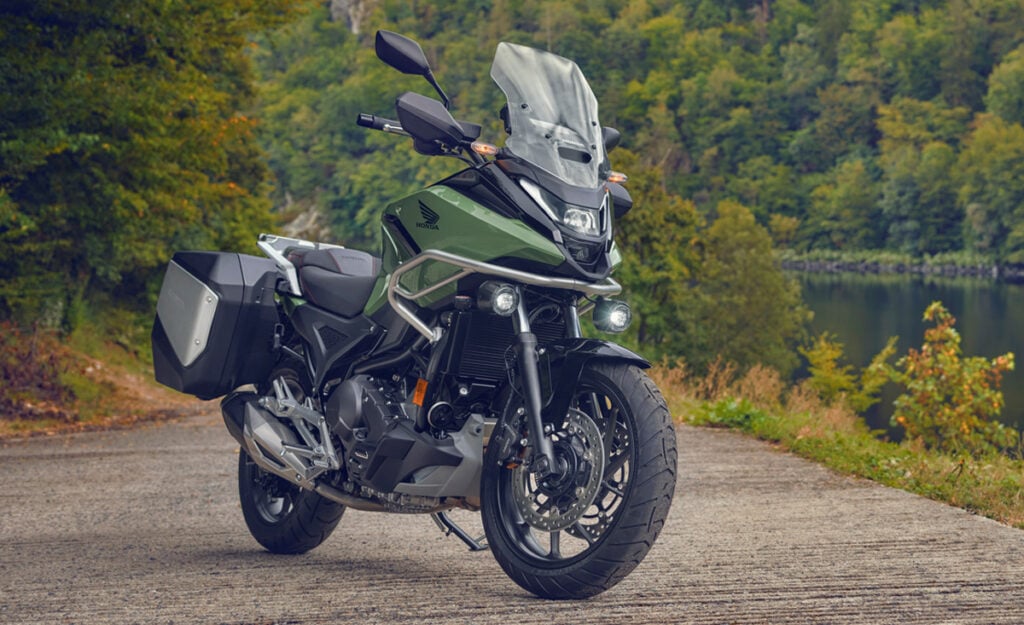
Honda has launched the new NC750X in South Africa with a whopping price tag of R150,749.
Being nearly the price of a small hatchback, the swanky new two-wheeler piqued our interest.
We thus took a deeper look at everything the most recent edition of Honda’s famous dual-sport bike has to offer.
What you get
The latest rendition of the venerable Honda NC750X benefits from a raft of upgrades intended to make it more stylish, comfortable, and safe.
Up front, it receives a new LED headlight cluster with sharper looks than before complementing the angular bodywork that protrudes from it.
Between the rider’s legs, where the fuel tank would normally be, is a redesigned “muscular cover” for the 23-litre storage area that can hold a full-face helmet.
Additionally, the bike gets a new seat skin with added stitching to amplify its premium nature, and at the rear, a revised tail unit emphasises its “mass-forward” stance.
This generation of NC750X makes increased use of the sustainable Durabio material, which consists of a bio-based polycarbonate resin.
It has now been applied to some fairing parts, the windscreen, and other components, making this evolution of the bike the first Honda to utilise coloured Durabio.
To tailor the bike to your needs, a height-adjustable screen is available as an optional accessory, as is a new comfort seat that uses additional urethane padding to provide a more comfortable ride.
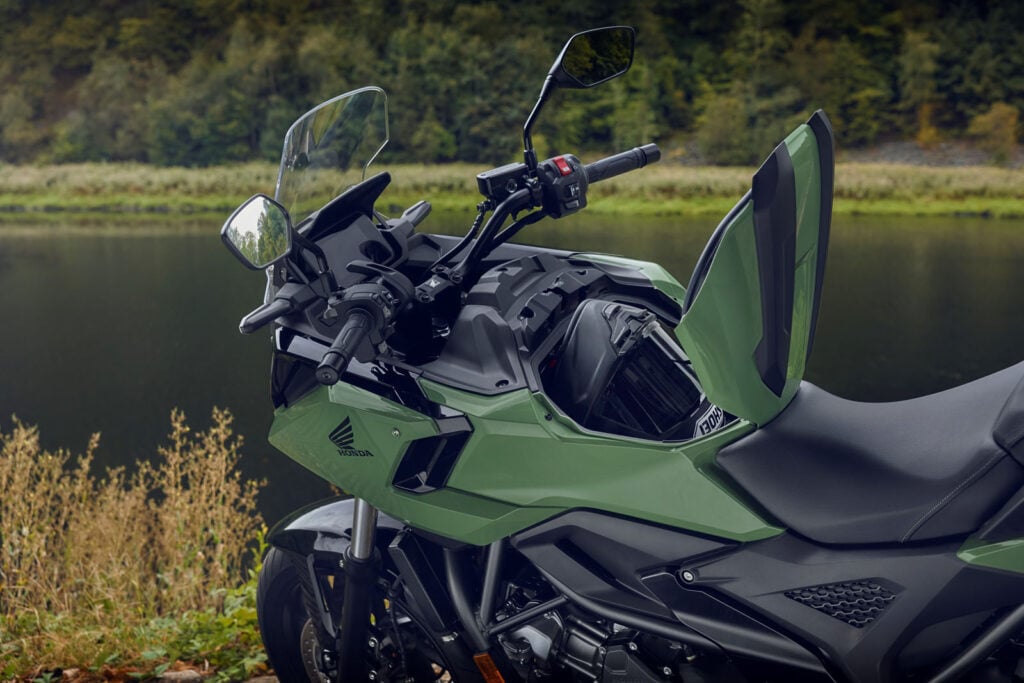
The new 5-inch full-colour driver’s display on the NC750X uses optical bonding to improve visibility in bright sunlight.
By sealing the gap between the cover glass and screen with resin, glare is reduced, and visibility improved.
The display itself can be customised with a variety of patterns and even offers smartphone connectivity via Honda RoadSync.
Honda RoadSync – operated through a new four-way toggle on the left handlebar – allows simple on-screen navigation as well as the option for the rider to make calls, listen to music, or receive voice feedback of weather conditions via a Bluetooth helmet headset.
Another innovative technology is the Emergency Stop Signal function of the rear indicators.
If negative acceleration of 6.0m/s2 is detected at a minimum speed of 56km/h with either brake working, the hazard lights flash to warn other road users a hard stop is in process.
At the same speed, the threshold is reduced if ABS is activated to a negative acceleration of a minimum 2.5m/s2.
It also has a “wave” key feature that keeps the engine from starting if the ID chip embedded in the key and the ID in the Engine Control Unit do not match.
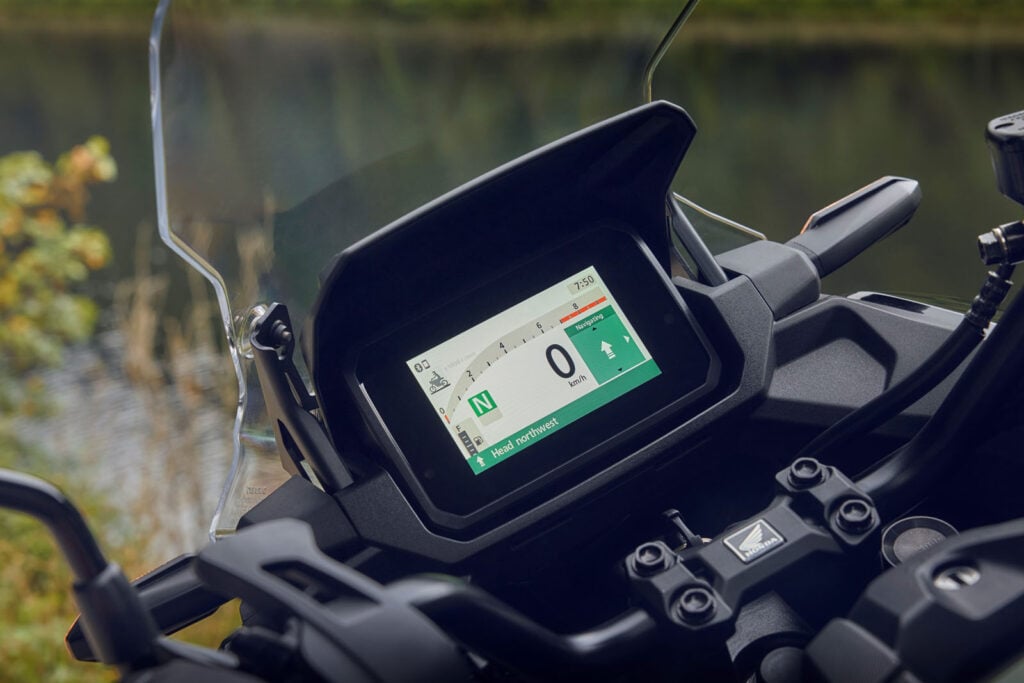
The 745cc, twin-cylinder engine of the new NC750X is similarly high-tech.
Peak power comes in at an impressive 43.1kW and maximum torque at 69Nm, which is already available from a very low RPM.
Where possible, Honda has crafted the engine components to do more than one job to keep it light, efficient, and reliable.
For instance, the camshaft drives the water pump, while one of the balancer shafts drives the oil pump.
Compliant with Euro 5+ emission standards, the Honda achieves a class-leading fuel efficiency of 3.6l/100km.
As such, the 14.1-litre fuel tank is sufficient for nearly 400km of riding.
Riders can also tailor the throttle and engine braking with four selectable modes including Standard, Sport, Rain, and User – the latter of which allows for a customised setup.
Furthermore, the Honda Selectable Torque Control system is fitted as standard, which provides three different levels of rear-wheel torque management.
Level 1 allows the minimum intervention for limited rear-wheel spin, like on gravel or dirt.
Level 2 is the default setting for general riding conditions, and Level 3 provides maximum control for slippery roads.
The system can also be switched off entirely should the rider so please.
Fitted with a five-speed manual as standard, the NC750X can optionally be specced with a dual-clutch automatic transmission (DCT).
The popular DCT, now in its 14th year of production, uses one clutch for start-up and 1st, 3rd, and 5th gears, while the other clutch takes care of 2nd, 4th, and 6th.
For the latest update, Honda wanted a smoother start from standstill and more control at low speed for units equipped with the self-shifting box.
“This requires a ‘quick yet gentle’ driving force at small throttle openings,” said the company.
To that end, the new DCT uses predictive technologies to estimate the oil pressure of the clutch piston chamber rather than just relying on an upstream oil pressure sensor.
This resulted in improved, more delicate clutch response.
The DCT now also features four automatic shifting schedules as well as a dedicated setting for extremely low-speed running.

Up front, the single disc and two-piston brake caliper of the previous NC have been replaced by dual two-piston axial-mount calipers and floating discs.
The setup ensures confidence-inspiring braking power in all conditions.
Rear braking is provided by a 240mm disc and single-piston caliper as before, with lightweight two-channel ABS providing competent braking abilities.
Lastly, the new NC750X boasts revised “3-by-3” cast-aluminium front and rear wheels measuring 17 inches at both ends.
The rims are shod with 120/70 ZR17 and 160/60 ZR17 tyres at the front and rear, respectively, which save 1.8kg in comparison to the older rubbers.
The weight savings negates the weight gain of the more capable front braking system.
Honda NC750X
